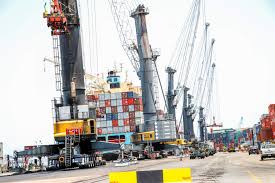The World Health Organization calls air pollution the “single biggest environmental threat to human health” and estimates that 99 percent of the world’s population live in locations that are above WHO thresholds designed to protect human health.
Tarik, age 42, lives in a village adjacent to a decades-old coal power plant in Bosnia and Herzegovina. On the day we visited, Bosnian cities were some of the most polluted places on Earth. Describing the devastating health toll the air pollution took each year on the village’s older residents he voiced his fear for his aging parents, who had lived there for over 40 years: “The older people in this village are desperate. They put up with this air for months. They don’t get out, they don’t socialize, they can’t get groceries or medication. It’s a terrible existence.”
An estimated seven million people die every year from indoor and outdoor air pollution. That’s more than died from Covid-19 over the last two years. Often invisible, air pollution receives little attention compared with other public health emergencies, but the threats to health are every bit as real
Human Rights Watch recently documented the horrific impacts of air pollution in Bosnia and Herzegovina during winter months. People living near some of the country’s five outdated coal-fired power plants told Human Rights Watch about the friends, family and neighbors who had died from cancer or cardiovascular or respiratory ailments that they believe were attributable to or exacerbated by pollution from the nearby coal plants. For them, the danger of air pollution is very real. The country has the world’s fifth highest mortality rate from air pollution.
A reliance on wood and coal for heat, coal for electricity generation in outdated power plants, poorly insulated buildings, an outdated vehicle fleet and natural factors all contribute to the country’s deadly air. Bosnia’s multiple tiers of government have not done enough to tackle the cause of the toxic air. They have failed to mitigate the risks the deadly air poses to human health or even to sufficiently warn the public of the dangers.
Air pollution affects all of us, but in different ways. People with certain health conditions, pregnant women, children, and older people are the most vulnerable. In Bosnia and Herzegovina, parents told us about their difficulties caring for children with asthma and bronchitis during winter and how their children could not safely step outside without suffering acute respiratory symptoms.
The International Day of Clean Air for Blue Skies is on September 7. It’s an opportunity to take stock of the enormity of the issue and re-double efforts to address the issue.
Air pollution is a global issue. The World Health Organization calls air pollution the “single biggest environmental threat to human health and estimates that 99 percent of the world’s population live in locations that are above WHO thresholds designed to protect human health. Ambient (or outdoor) air pollution is primarily caused by the burning of fossil fuels, forest fires, waste burning, other industrial activities and natural factors.
An estimated seven million people die every year from indoor and outdoor air pollution. That’s more than died from Covid-19 over the last two years. Often invisible, air pollution receives little attention compared with other public health emergencies, but the threats to health are every bit as real. In fact, 94 percent of air pollution deaths are due to noncommunicable diseases – notably cardiovascular disease, stroke, chronic obstructive pulmonary disease and lung cancer. And nine out of ten of these deaths occur in low- and middle-income countries.
Under international human rights law, countries have a responsibility to tackle air pollution, which has devastating impacts on a range of human rights, including right to life and health. Governments are required not only to take steps to limit air pollution by addressing its causes, but also to protect people during the worst air pollution events. This includes adequately monitoring air quality, enforcing rigorous air quality standards, and assessing, communicating, and mitigating risks to human health when pollutant levels are high.
Air pollution and climate change are directly linked. Burning fossil fuels, responsible for about 80 percent of the greenhouse gas emissions that drive climate change, is a key driver of outdoor air pollution. Shifting from fossil fuels to clean energy, including wind and solar, is a crucial means to tackle air pollution and the emissions that cause climate change. It can save millions of lives annually, including in places like Tarik’s village. What are we waiting for?








Thank you for your sharing. I am worried that I lack creative ideas. It is your article that makes me full of hope. Thank you. But, I have a question, can you help me?